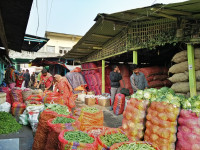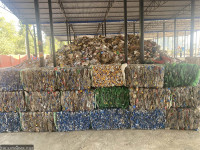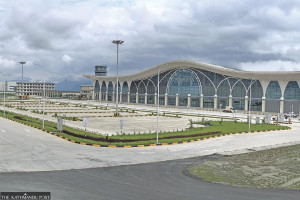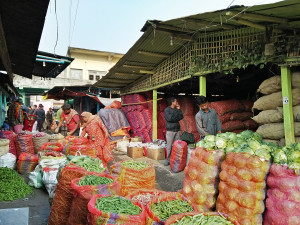Money
Paddy output expected to remain near record high
Nepal’s paddy output this fiscal year is expected to amount to 5.15 million tonnes, down 1.49 percent from the 2016-17 bumper harvest, mostly on account of the August floods in the southern Tarai plains, the Ministry of Agricultural Development said.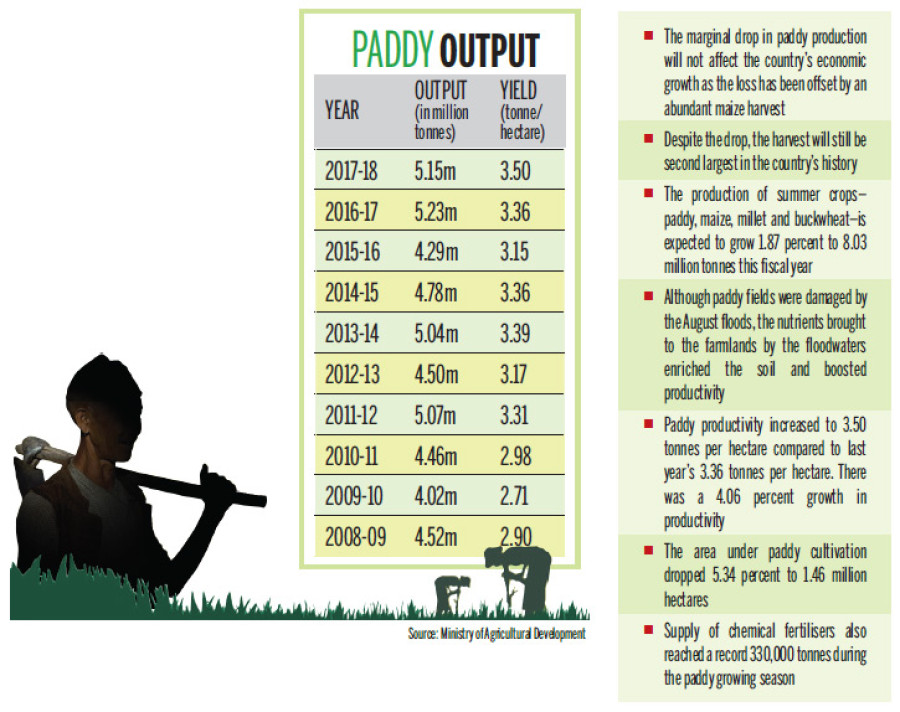
Sangam Prasain
Nepal’s paddy output this fiscal year is expected to amount to 5.15 million tonnes, down 1.49 percent from the 2016-17 bumper harvest, mostly on account of the August floods in the southern Tarai plains, the Ministry of Agricultural Development said.
Despite the drop, the harvest will still be second largest in the country’s history. The marginal drop in paddy production will not affect the country’s economic growth as the loss has been offset by an abundant maize harvest, said Ram Krishna Regmi, chief statistician at the ministry.
According to the statistics, the production of summer crops—paddy, maize, millet and buckwheat—is expected to grow 1.87 percent to 8.03 million tonnes this fiscal year.
In the last fiscal year, the country recorded its largest paddy production in history with a 21.66 percent jump to 5.23 million tonnes. “Although paddy fields were damaged by the August floods, the nutrients brought to the farmlands by the floodwaters enriched the soil and boosted productivity,” said Regmi.
The country suffered record floods following torrential rains from August 11-14 that inundated huge tracts of land in 31 districts. Before the floods, the ministry had projected paddy output to swell to a record 5.4 million tonnes. “However, after the deluge, we estimated that the summer paddy output could plunge by at least 10 percent. But the floods proved to be beneficial for paddy despite their immediate ill effects.”
The floods had both positive and negative impacts on the paddy crop. Floodwaters swept away 25,000 hectares of standing paddy, he said. “However, the country recorded increased output due to the silt and nutrients brought by the floods that boosted productivity.”
The ministry’s statistics show that paddy productivity increased to 3.50 tonnes per hectare compared to last year’s 3.36 tonnes per hectare. There was a 4.06 percent growth in productivity. The area under paddy cultivation dropped 5.34 percent to 1.46 million hectares.
According to Regmi, the country also witnessed uniform rainfall after the floods until the pre-harvest period that boosted productivity. The supply of chemical fertilisers also reached a record 330,000 tonnes during the paddy growing season, according to the ministry. A fall in global prices prompted the government to boost imports which allowed farmers to obtain adequate quantities of the soil nutrients on time.
Increased use of fertiliser plays a key role in boosting output. Some experts said that the August rainfall originated in the Chure range, the lowest foothills of the Himalaya, and that the impact on the paddy fields in the southern plains was not so great.
Meanwhile, the maize output, which is the second largest cereal crop in Nepal after paddy, is expected to increase 9.4 percent to 2.55 million tonnes this fiscal year. Millet production is likely to grow by a marginal 0.02 percent to 313,987 tonnes.
However, buckwheat production is expected to drop by 4.54 percent to 11,472 tonnes as the buckwheat acreage shrunk 6.99 percent to 10,296 hectares this fiscal year.
The farm sector’s contribution, including the livestock sector, to the country’s gross domestic product (GDP) amounted to Rs691.2 billion in the last fiscal year. Paddy accounts for 20 percent of the total agricultural output.
Nepal’s farm sector registered a nine-year-high growth rate of 5.32 percent in the last fiscal year, helping the country to achieve a 23-year-high economic growth rate of 6.9 percent.




 20.12°C Kathmandu
20.12°C Kathmandu

